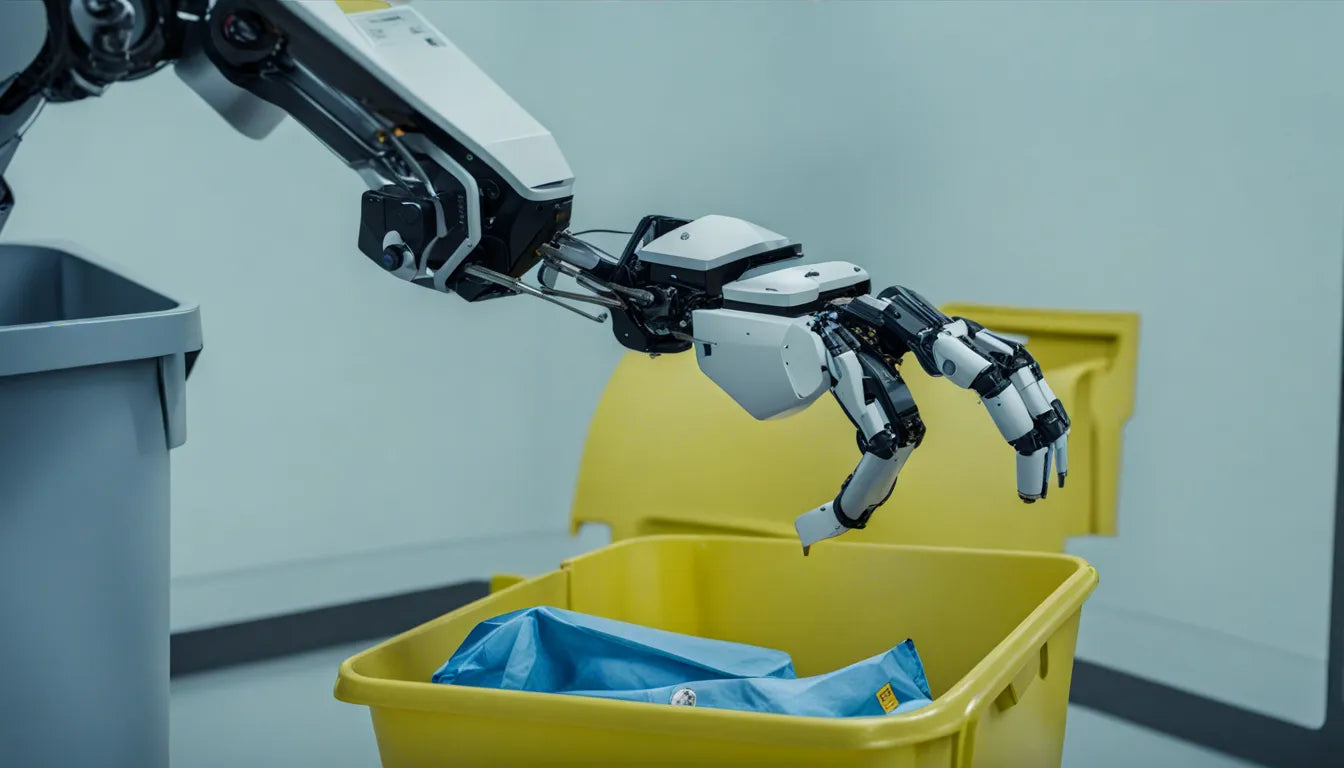Demystifying Depth Sensors: A Beginner's Guide to Understanding their Applications

Welcome to the Beginner's Guide to Understanding the Applications of Depth Sensors! In a world dominated by technology, it's crucial to understand the various tools and devices shaping our everyday lives. Depth sensors are one such innovation that has revolutionized industries ranging from gaming to healthcare.
But what exactly are depth sensors, and how do they work? In this guide, we will demystify these cutting-edge devices and explore their wide range of applications. Whether you're a tech enthusiast or a beginner eager to learn, this article will provide you with a comprehensive understanding of depth sensors.
From enabling immersive virtual reality experiences to assisting in object detection, depth sensors have found their place in numerous industries. We will delve into these real-world applications, showcasing how depth sensors are transforming the way we interact with technology.
So, if you're ready to explore the fascinating world of depth sensors and their diverse uses, let's dive right in! By the end of this guide, you'll have a solid foundation in understanding the potential and impact of these remarkable devices.
How do different types of depth sensors work?
Depth sensors operate by measuring the distance from the sensor to the surface of an object, providing three-dimensional depth information. Various technologies are employed to achieve this goal, and here are some common principles behind the workings of depth sensors:
Time-of-Flight (ToF) Technology:
ToF is a prevalent method where a depth sensor emits light pulses, often using a laser light source, and measures the time it takes for the light pulse to travel to the object and back to the sensor. By calculating the time of flight, the system determines the distance between the object and the sensor, obtaining depth information.
Structured Light Technology:
Structured light depth sensors project a pattern of encoded light (such as stripes or point clouds) onto the object's surface. The sensor then captures the reflection of this pattern. Analyzing the distortion of the pattern allows the system to compute the shape and distance of the object's surface.
Stereo Cameras:
Depth sensors with stereo cameras emulate the human eye's visual effect using two cameras. By comparing the positions of an object between the two cameras, the system can calculate the distance from the object to the cameras, providing depth information.
Depth sensors find wide applications in various fields, including computer vision, virtual reality, augmented reality, autonomous driving, and more. Understanding the working principles of depth sensors enables us to leverage their advantages more effectively and innovate in creating new applications.
Applications of depth sensors in gaming
Depth sensors play a pivotal role in revolutionizing the gaming industry by introducing immersive and interactive experiences. Here are some notable applications of depth sensors in gaming:
Gesture Control:
Depth sensors, particularly those using technologies like ToF or stereo cameras, enable precise gesture recognition. Players can interact with games using natural body movements, hand gestures, and even facial expressions. This enhances user engagement and provides a more intuitive gaming experience.
Motion Tracking:
Depth sensors can track the movement of players in three-dimensional space. This technology allows for accurate motion tracking, enabling players to control in-game characters or objects by moving their bodies. This is particularly popular in sports and fitness games where players can replicate real-world movements.
Virtual Reality (VR) and Augmented Reality (AR):
Depth sensors are integral to creating immersive VR and AR gaming experiences. They accurately capture the depth and position of objects and players in the virtual environment, enhancing the sense of presence and realism. Players can explore virtual worlds, interact with virtual objects, and experience games in entirely new ways.
Enhanced Environment Interaction:
Games can utilize depth sensors to enhance environmental interactions. For example, players may be able to manipulate in-game objects by reaching out and physically interacting with them, adding a tactile element to the gaming experience.
Adaptive Gameplay:
Depth sensors can be used to adapt gameplay based on the player's physical position, movement, and gestures. Games can dynamically adjust difficulty levels, challenges, or storyline progression, providing a personalized and responsive gaming experience.
In summary, depth sensors bring a new dimension to gaming, enabling developers to create innovative and immersive experiences that go beyond traditional input methods. As technology continues to advance, we can expect even more creative applications of depth sensors in shaping the future of gaming.
Applications of depth sensors in robotics
Depth sensors have become integral components in the field of robotics, offering advanced capabilities for perception, navigation, and interaction. Here are several applications of depth sensors in robotics:
Obstacle Avoidance:
Depth sensors, such as LiDAR or ToF cameras, are widely used for obstacle detection and avoidance in robotic systems. These sensors provide real-time depth information, allowing robots to navigate and maneuver in complex environments while avoiding collisions.

Simultaneous Localization and Mapping (SLAM):
Depth sensors contribute to SLAM algorithms, enabling robots to create maps of their surroundings while simultaneously determining their own location within that environment. This is crucial for autonomous navigation and exploration tasks.
Object Recognition and Manipulation:
Depth sensors play a vital role in robotic vision systems for recognizing and manipulating objects. They provide accurate depth data, allowing robots to perceive the three-dimensional structure of objects and grasp them with precision.
3D Environment Reconstruction:
Depth sensors facilitate the creation of detailed 3D models of the environment. This is beneficial for applications such as environmental monitoring, inspection, and surveillance, where a comprehensive understanding of the surroundings is crucial.
Autonomous Vehicles:
Depth sensors are essential for autonomous vehicles, including drones and unmanned ground vehicles. They provide critical information for navigation, allowing these vehicles to detect and avoid obstacles and navigate through dynamic environments.
Quality Control in Manufacturing:
Robots equipped with depth sensors can perform detailed inspections in manufacturing processes. They can assess the dimensions and quality of products, identifying defects or variations and ensuring a high level of precision.
Depth sensors continue to drive advancements in robotics, enabling robots to perceive and interact with their environment in increasingly sophisticated ways. As technology progresses, we can expect even more diverse and innovative applications of depth sensors in the field of robotics.
Conslusion
As we navigate through the realms of technology, depth sensors stand out as catalysts for innovation, influencing fields from gaming to robotics.
Understanding the fundamental principles behind different types of depth sensors, such as Time-of-Flight, Structured Light, and Stereo Cameras, has unveiled the science that powers these transformative devices. The applications of depth sensors in gaming have redefined user interaction, ushering in an era of gesture control, immersive virtual reality experiences, and adaptive gameplay.
Venturing into the realm of robotics, depth sensors emerge as crucial components, facilitating obstacle avoidance, simultaneous localization and mapping (SLAM), object recognition, and 3D environment reconstruction. Their role in autonomous vehicles and manufacturing quality control underscores the depth sensors' impact on efficiency and precision in industrial settings.
As we witness the continual evolution of technology, it is evident that depth sensors hold the key to unlocking new dimensions in human-machine interaction. From gaming enthusiasts to robotics engineers, this guide serves as a stepping stone for anyone eager to delve into the captivating world of depth sensors, inspiring future innovations and applications yet to be imagined. The journey into the possibilities of these remarkable devices is boundless, promising a future where depth sensors continue to shape and redefine the landscape of technology.



